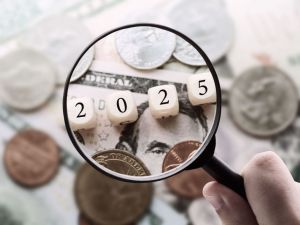Financial markets, predominantly equity markets, have had an incredible run since November 2022, with many of the major indices reaching all-time highs. This has been great for our portfolios and has helped us get over the £4bn mark of assets we look after for our clients.
However, it has caused a few clients to ask us: “Should I wait for markets to drop before adding more?”
I appreciate the sentiment, as it makes more sense than the conversations that we have when people pause their investments when the outlook is gloomy and markets are down. Admittedly, it’s a thought I’ve had myself. But I am happy in hindsight that I didn’t go through with it, as this would be falling into the biggest trap when investing: trying to time the market.
This is not the first equity rally
Global equities (FTSE All-world index) have had countless all-time highs since 2011. What if, at one of those, we had said “this is it now”, stopped contributing to the plan set out and gone down a different route? The outcome would have been disastrous for us.
These conversations are not new. Let’s say we’re at the start of 2024, markets are on the charge, we’re at all-time highs. People then were saying to us, “markets are looking a bit hot, will probably wait a bit”.
They would have missed out on all of last year’s performance (at the time of writing, nearly 20.1% if in the p7), or they would have had to bite the bullet and buy at a later date at a much higher price.
So the price of going against the grain is a really big call and is incredibly costly when you do get it wrong. Imagine if you had called it a day at one of the ‘market tops’ in summer 2019 and sat waiting for markets to really crash – bar the momentary covid dip, where very few people were comfortable with buying at this point. You would have missed around 180% looking just at global equities, by just simply waiting for the big crash to happen.
So what if markets do actually cool off in the short term?
Say that the fears that those clients and I have come to fruition and markets cool off a bit through this year: what then? I have a long time horizon and my risk appetite has put me in an appropriate risk portfolio, so what’s my trigger point to buy back into that plan?
When markets are in a downturn, there is never someone waving a big flag saying: “Now is the time to buy!”
In fact, the narrative surrounding the bottom of the markets is always: “Things are terrible, it will only get worse.”
The good news only starts to appear once you are near the top of the next rally – which is too late. Missing the re-entry point by a small amount can be incredibly costly.
Source: Moneyfarm research, Refinitiv data (Total return index of the MSCI World in $), Refinitiv data; Timeline: 2012-01-13 to 2025-02-04
Performance figures are gross in US dollars and don’t consider taxes, costs and commissions and the actual returns could be lower due to costs and charges of investing in these instruments.
Here you can see the performance of global equities (shown by an MSCI world index ETF) from 2012 to Feb this year. The total return is just shy of 450%. If you miss just the 3 best days – yes, three days in 12 years – it drops below 400%. If you miss the best 10 days, again out of 12 years, it drops to a mere 300% – and the best 30 days, the missed gains are, as you can see, astronomical. Again, no one will make sure the day before those best days to let you know. If anything, they come when it’s least expected.
So it’s all well and good being right once – which is extremely difficult – but you can’t be in cash or bonds forever with a long time horizon. Getting the re-entry point right is arguably more important and that is even closer to being impossible, and it can be incredibly costly if you do get it wrong.
Stick to the plan: time in the market beats timing the market
Unsurprisingly, the message of this piece is to stick to the plan. It’s a personal favourite of mine and our portfolios are very much designed to do this. There’s a lot of literature which will support this, and as Kenneth Fisher always said: “Time in the market beats timing the market.”
We see this at work every day, and it’s our job to help investors reach their goals as best they can. The portfolio that you have been allocated by us is based on your time horizon and risk appetite and, regardless of the short-term noise, should be the best plan for you. If you are in a high-risk portfolio, with lots of equity, then most likely you have a long time horizon. So as a result, the short-term view of markets should mean very little to you.
Similarly, don’t get too over-excited and increase your risk above your recommended risk level because your portfolio is doing great. Everything should be constructed to match your individual circumstances and investment goals.
If you would like to chat with one of our team about your situation anyway, I would actively encourage you to book a call. This is what we are here to help you with.
*As with all investing, financial instruments involve inherent risks, including loss of capital, market fluctuations and liquidity risk. Past performance is no guarantee of future results. It is important to consider your risk tolerance and investment objectives before proceeding.





